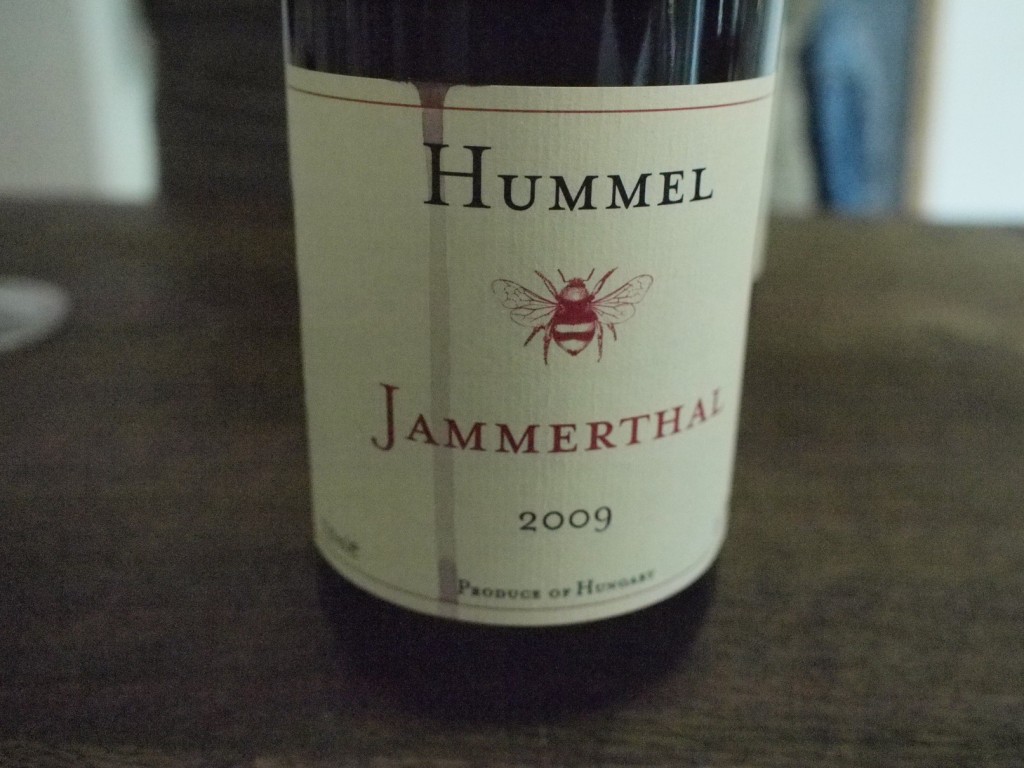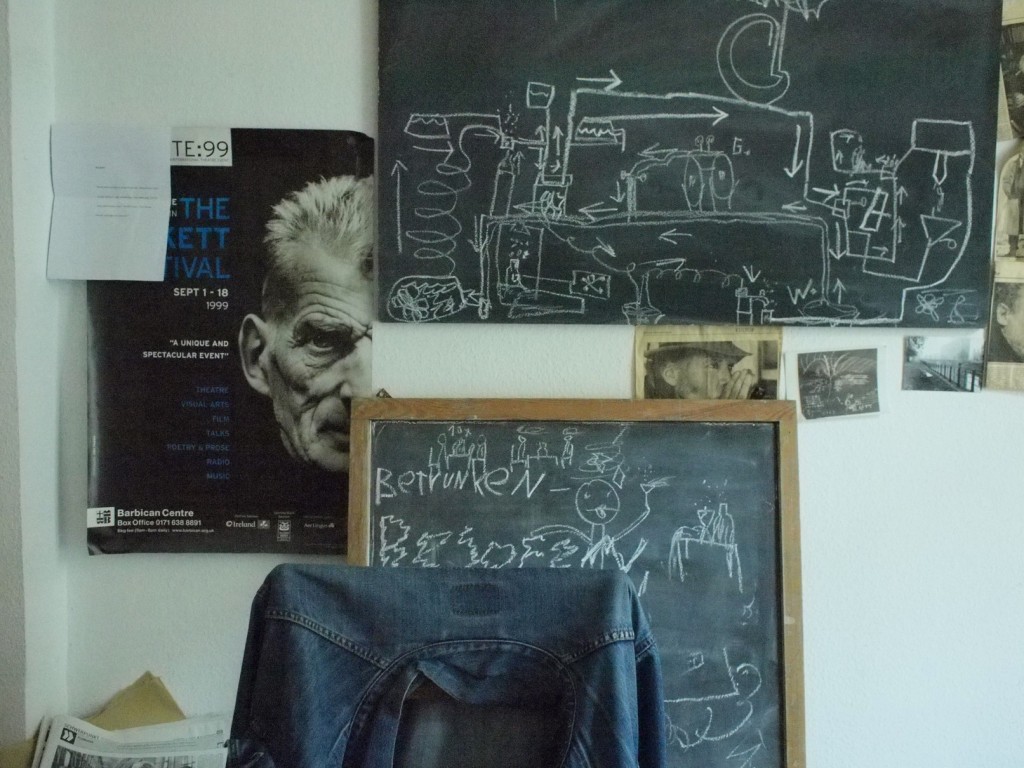Outside Germany few people have much idea what’s happening in the wine scene here. They often make the mistake of assuming that dynamic young German winegrowers are like dynamic young winegrowers everywhere else. They also find it hard to wrap their minds around the idea that there’s a special kind of creative freedom in Wine-Germany and a multi-cultural spirit in Wine-Berlin. So for their benefit here is the breathtaking story of the extraordinary Herr Hummel…
I bumped into the Hummel wines from the Villány region of Hungary, close to the border with Croatia, in Berlin about five or six years ago and didn’t know what to make of them. Then a year or two later, also in Berlin, was introduced to a German called Horst Hummel and din’t know what to make of him either. Though Hummel is often in Villány tending his 8 hectares of vines and the rather wide range of wines he make from them, but when he’s in Berlin he’s also a part-time lawyer. (Berlin is also the main market for his wines). Since that first meeting each set of his new releases was more exciting than the one before it, and in 2008 he began staging an annual Villány tasting party in Berlin each February. Through all of this I got to know both Hummels, the feet-firmly-on-the-ground lawyer and the eccentric winegrower.
One thing lead to another, and in February 2011 he became WEINHIER’s lawyer. Some people seem to think that he got the job though some special deal whereby he works for nothing in return for good write ups, but we’ve already paid him too many thousands of Euros for that to be true. The actual reason that we picked him is that he knows his way around both press law and the wine scene. Better still, he shares the belief that wine on the net is seriously undeveloped which WEINHIER co-founder Brendan Howell and I share.
But back to the winegrower Horst Hummel. In the 1990s Hummel’s enthusiasm for wine and a fascination with Hungary – still clearly the most under-rated winegrowing nation in Europe – lead him to go prospecting for a winegrowing location. By the end of his second visit to Villány in 1998 he was the owner of more than 7 hectares of vineyards there. From the way he describes the 1998 harvest and the winter which followed seem to have been an abrupt and painful introduction to the realities of winemaking. Shortly afterwards came a no less abrupt and painful introduction to the realities of wine marketing including the special problems caused by Hungary’s Ost-Block Image in Western Europe (not exactly a great sales pitch for wines of any kind).
It took a while before Hungary got its tentacles into me, but when I did I really wanted to know what was happeing there. The man responsible for thsis was Zoli Heiman of Székszard who I got to know while I studied at the famous Geisenheim wine school in 2008/9. He organised two trips to his country that opened my eyes to Hungarian wine and culture. There I discovered a rather complex wine industry, the widely-distributed Hungarian wines being mostly clean and correct, but banal. At the other end of the scale are massive (and massively over-extracted) reds produced for the nouveau riche of Budapest, which taste like dry port (if you can imagine that). Then there are the highly individual dry wines, often made from indigenous grape varieties, that are as striking as anything I’ve found in the German speaking world, which together form a completely distinct world of wine flavours unlike anything else. Hummel’s new wines clearly belong to this group.
The picture above shows one of Hummel’s latest releases and one of his most daring wines, the 2009 Jammerthal, which is named after the vineyard and is made from the Portugieser grape. Portugieser is generally regarded by the winegrowers of Villány of something to be forgotten in favour of the fashionable Cabernets and Merlot, so they don’t take it seriously as Hummel has. The vineyard name is of German origin like many other names in Villány which was populated by Swabians in the early 18th century, and means „Vale of Tears“. It is arguably the most famous vineyard site in the entire region, but that doesn’t stop German wine merchants and sommleiers saying things to Hummel like, „you can’t write that on a wine label!“ even before they’ve tasted the rich and silky wine with its wonderful perfume of ripe red berries and cherries.
Hummel’s other remarkable innovation this year is the 2009 „Spatz“, a red from the Kékranfkos grape, also known as Blaufränkisch in Austria and Lemberger in Germany. It is still very closed and in spite of its density and power is decidedly sleek. Leave it to stand a while in the glass and it developes aromas of elderberry, cocoa powder and graphite. For Hummel this grape is „the Pinot Noir of Central Europe“, a conviction he shares with Roland Velich of Moric in Burgenland/Austria. This is the right comparison for both the „Spatz“, German for Sparrow, and its smaller brother, the juicy 2008 Villány Kékfrankos with its pepper and licorice character. The Jammertal and „Spatz“ both cost 19,50 Euros direct from Hummel, which is moderate for what you get in the glass. His regular Villány Kéfrankos is great a bargain at just 7,50 Euro.
And what the hell was the stuff on the wall behind Hummel in the photograph above ? The picture below shows the „Inspiration Wall“ in his apartment in Berlin-Prenzlauer Berg. My tasting marathon with him was accompanied by Neil Young’s live album ‘Rust Never Sleeps’ kranked up high. That’s the new German wine Zeitgeist!
Horst Hummel Villány-Berlin
Buchholzer Straße 9
10437 Berlin
E-Mail: hh@weingut-hummel.com
Web: www.weingut-hummel.com




I have read so many articles or reviews on the topic of the blogger lovers but
this post is truly a fastidious post, keep
it up.
Also visit my web page partnership llc (Raymundo)